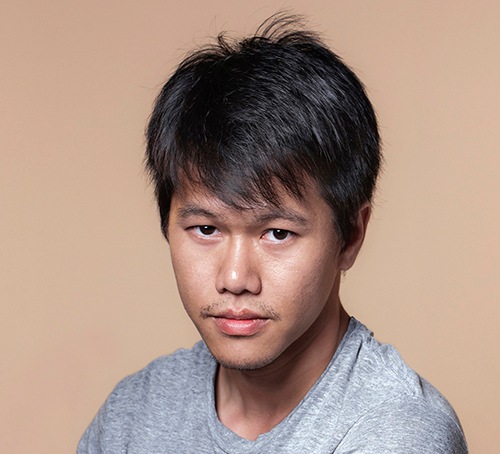
CATEGORY 1: DIGITAL/VIDEO
Anupong Charoenmitr | Thailand
b. 1981, Thailand
Born in Bangkok, Anupong Charoenmitr has a BA in Fine Art of Photography from Rangsit University and an MA in Fine Art from Silpakorn University, both in Bangkok. In 2012, he started making films and videos that draw on observations and experiences. His video works capture the last moment of life: the struggles of a dying pigeon on the street in Bangkok, a cow being forced to the slaughterhouse, and the process of a butcher cleaning a dead pig. In 2013, he was selected for Cross Stitch, an exhibition of young artists started by the Bangkok Art and Culture Centre, and was selected as a finalist in the video section at the International Arte Laguna Prize, Venice.
These video works portray scenes which look like they might be from a scene on stage. Narrative is hinted at rather than explained, subtly revealing truths about life and its end. The scenes are realistic yet romantic, catching the subjects’ last moments of life. To Face shows Man understanding the state of events where confrontation of the situation with his own instincts. Clock positions two films to create a new meaning, conveying the experience of thought and sense of coordination between the real picture and animation.
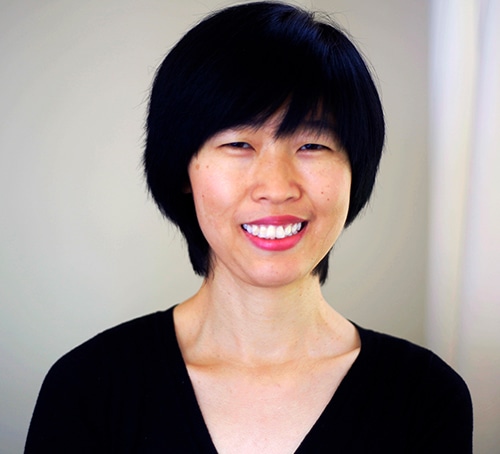
Sutthirat Supaparinya | Thailand
b. 1973, Thailand
Sutthirat Supaparinya is a Chiang Mai-based visual artist whose work encompasses installation, photography, video, sculpture and writing. Through her work she questions the interpretation of images, text and sound in the media, using simple everyday images to explore larger issues. Her recent projects focus on the impact of industrial activities on other humans and the landscape.
Supaparinya earned a BFA in painting from the Faculty of Fine Arts at Chiang Mai University, Thailand and is a postgraduate in Media Arts from Hochschule Fuer Grafik und Buchkunst in Leipzig, Germany. Her works have appeared in museums and galleries such as Hiroshima City Museum of Contemporary Art and Tokyo Metropolitan Museum of Photography, Japan, Jim Thompson Art Center, Thailand, Queensland Art Gallery and Sherman Contemporary Art Foundation, Australia, the Solomon R. Guggenheim Museum, USA, Singapore Art Museum, Kuandu Museum of Fine Arts, Taiwan and Hong Kong Arts Centre.
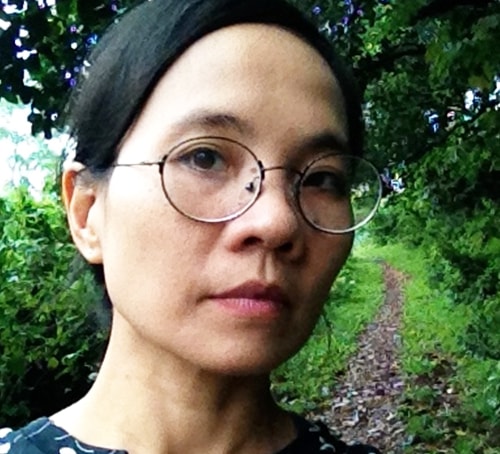
Trinh Thi Nguyen | Vietnam
b. 1973, Vietnam
Nguyen Trinh Thi is a Hanoi-based independent filmmaker and video/media artist. Her diverse practice has consistently investigated the role of memory in the necessary unveiling of hidden, displaced or misinterpreted histories; and examined the position of artists in the Vietnamese society.
Nguyen studied journalism, photography, international relations and ethnographic film in the United States. Her films and video art works have been shown at festivals and art exhibitions across Asia, Europe, and the USA – including Jeu de Paume, Paris; CAPC musée d’art contemporain de Bordeaux; the Lyon Biennale 2015; Asian Art Biennial 2015, Taiwan; Fukuoka Asian Art Triennial 2014; Singapore Biennale 2013; Jakarta Biennale 2013; Oberhausen International Film Festival; Bangkok Experimental Film Festival; Artist Films International; DEN FRIE Centre of Contemporary Art, Copenhagen; and Kuandu Biennale, Taipei.
Nguyen is founder and director of Hanoi DOCLAB, an independent centre for documentary film and the moving image art in Hanoi since 2009.
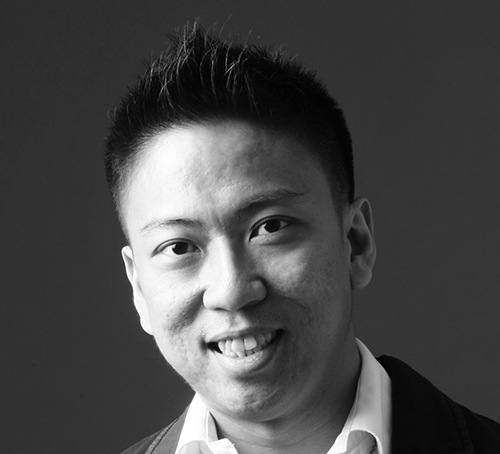
CATEGORY 2: INSTALLATION
Aditya Novali | Indonesia
b. 1978, Indonesia
Aditya Novali was born in 1978 in Solo, Central Java. From 1997 to 2002 he studied architecture at Parahyangan University in Bandung. It is evident that architecture school influenced his work to become more structural and formalistic. Subsequently he studied conceptual design at the Design Academy Eindhoven, Holland. In recent years he has been working on various concepts around ideas such as boundaries, identity and nation. In 2010 he presented his “rotatable painting”, which focused on interaction as a way to communicate and challenge an audience. This was followed by The Wall: Asian Un(real) Estate project (2011), Identifying Indonesia (2012) and NGACO (2014).
More recently he has tried to trace back his early passion in drawing and mathematics, emotion and calculation, archive and imagination, in more recent contexts. This can be seen in his Painting Sense, The Order (2014) and Conversation Unknown (2015).
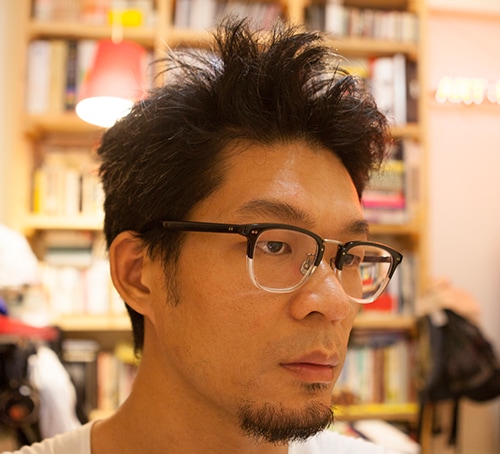
Huang Po-Chih | Taiwan
b. 1980, Taiwan
In his multi-disciplinary practice, Huang Po-Chih focuses on exploring issues related to production, agriculture, manufacturing, and consumption, and from there undertakes criticism on a socio-economic level. His works envision a macroscopic backdrop of trade and exchange, examining a cross-section of complex industrial structures all the way down to the individuals who partake in this structure.
Huang Po-Chih adopts various roles in his projects. He has perused and documented his family heritage, stories about his mother’s ancestry and family members; as a producer, he reclaimed barren farmland in order to grow lemon trees; as an entrepreneur, he drafted and executed proposals; as an artist, he has manipulated the system and resources of the art world. His projects are not only presented as objects of our observation but they also inherently take on potential and enduring social significance.
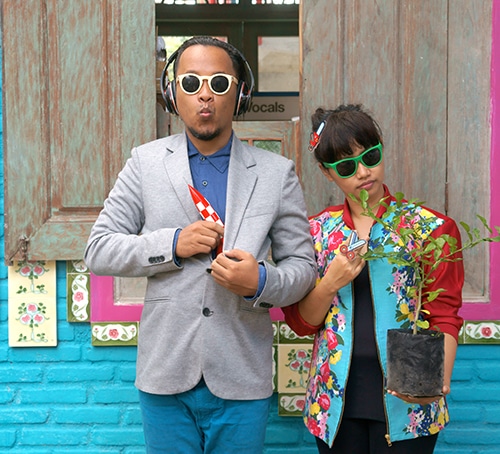
indieguerillas | Indonesia
Dyatmiko Lancur Bawono – b. 1975, Indonesia
Santi Ariestyowanti - b. 1977, Indonesia
indieguerillas is an artist collective from Yogyakarta, Indonesia, made of husband and wife Dyatmiko Lancur Bawono and Santi Ariestyowanti. indieguerillas was founded in 1999 as a graphic design firm. indieguerillas’s philosophy of “constantly in guerrilla to find new possibilities” led them to become full-time artists in 2007. Nevertheless, design still plays a very important role for them. Their design background allows them to explore the use of unconventional media and techniques as a part of their artistic output.
Wayang figures, especially the Punakawan (the characters of Javanese leather puppet jesters), together with popular brands and their visual symbols are the main vocabularies of the visual language of indieguerillas. The hip-hop Punakawan decorated with branded items depicted in their artworks is the reflection of what indieguerillas see as cultural inferiority complex of the Indonesians, including the artists themselves, who claim to be proud and happy to be ‘colonised’ by global consumerism and to be disconnected from their own roots of culture and tradition. indieguerillas often refer to themselves as “the happy victims”.
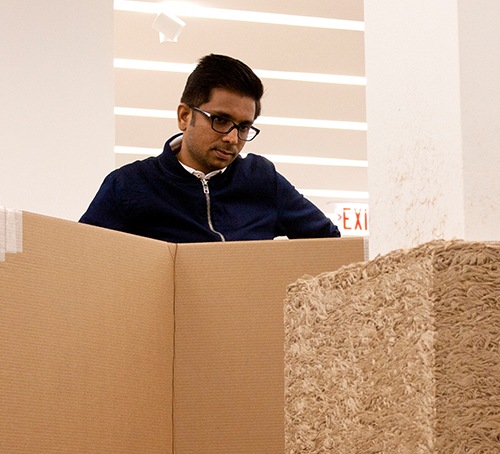
CATEGORY 3: PAINTING
Manish Nai | India
b. 1980, India
Manish Nai is from Gujarat and lives and works in Mumbai. His art is rooted in the treatment of materials that are indicative of the hustle and bustle of urban India. His engagement with the city, specifically its surfaces and sites of development and decay, were the starting point for him to begin using material that is both modest and quintessentially Indian. He has shown works in and Galerie Gebr, Lehmann, Berlin; Galerie Mirchandani + Steinruecke, Mumbai, Mumbai City Pavilion at the 9th Shanghai Biennale and the 2014 Kochi-Muzaris Biennale, India.
Nai later embarked upon photography, and the Billboard Series on view here is indicative of his engagement with the intense impulses of an environment that controls all of our senses. He observes billboards, not at the peak of their appearance, but rather their ‘down times’. Nai finds that the blank billboards function as a sound controller within an extremely ‘high volume’ city. They also recreate the idea and gesture of abstract painting and allude to the history of abstraction through their delicate variations on blankness.
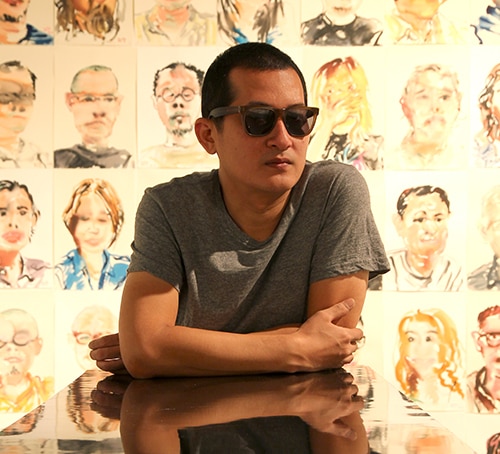
Tawan Wattuya | Thailand
b. 1973, Thailand
Tawan Wattuya is known for his unique approach to watercolour and thought-provoking subject matter. Wattuya’s choice of watercolour as a medium is a deliberate attempt to convey the speed and dynamism of contemporary Thai society and explore the complex contrasts of Thai society. Wattuya’s paintings are always poetic but nevertheless provocative in terms of his critical engagement with corruption, globalisation and societal hypocrisy...
With experience of art residencies in several countries in Europe, the US, Asia and South America, Wattuya has chosen to view his homeland from a distance, studying the social and political situation from afar in order to bring to his work more layers of understanding and deepness. His works have been exhibited extensively in Bangkok, Singapore, Beijing, Paris, New York, Tokyo, Brisbane, and Brussels.
Recent major solo exhibitions include ‘When Water Beats’, Art et Plus Gallery, Paris, France, 2015; ‘Dek Oey Dek Dee’, Toot Yung Art Centre, Bangkok 2014; ‘Like a Virgin’, Alliance Francaise, Brisbane, Australia, 2014; ‘Tii Tai Krua’, Chula Art Centre, Bangkok, Thailand, 2013 and ‘Fading Nostalgia’, Yang Gallery, Beijing, China, 2012.
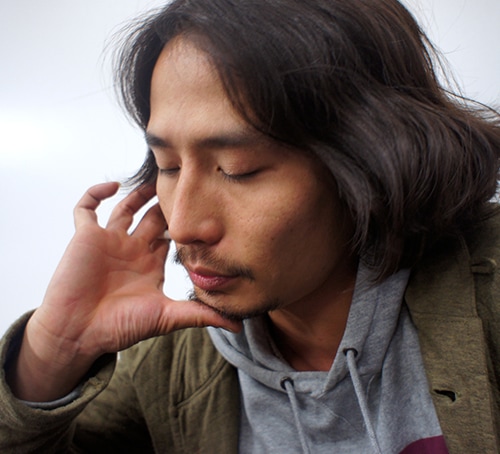
Toshiyuki Konishi | Japan
b. 1980, Japan
Toshiyuki Konishi (b. Hiroshima, 1980) paints portraits which obscure identities but reveal a deeper universalism. He creates his characters through bold strokes, lines and dots that capture the physicality of the human body ad that have a deliberate sense of the primitive. His works are based on photographs of his family or people close to him from which he produces simply-sketched figures that have an almost ghostly appearance.
He has participated in numerous group exhibitions such as at The National Museum of Art Osaka, the SOMA Museum of Art, Seoul, and Tokyo Opera City Art Gallery, Japan.
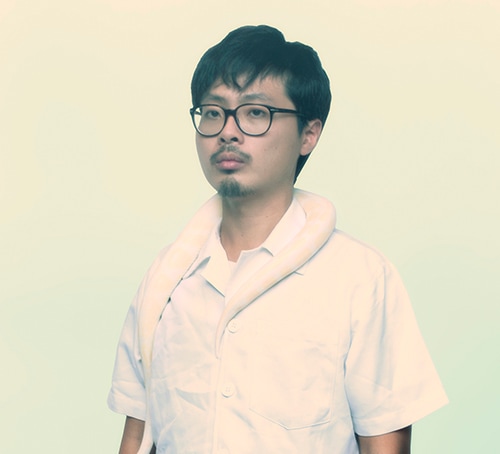
CATEGORY 4: PHOTOGRAPHY
Robert Zhao Ren Hui | Singapore
b. 1983, Singapore
Singaporean visual artist Robert Zhao Renhui (b. 1983) works mainly with photography but often adopts a multi-disciplinary approach by presenting images together with documents and objects. His work is drawn from observation of the natural world but instead of being documentary, instead he constructs narratives which are layered over each other, provoking doubt in viewers as to the status of the works as documentary or fiction. He formed the Institute of Critical Zoologists in 2008 as an umbrella organisation for his activities with the stated aim of advancing “unconventional, even radical, means of understanding human and animal relations.”
His recent exhibitions include the Daegu Photo Biennale 2014, Busan Biennale 2014, Moscow International Biennale of Young Art 2014, PhotoIreland 2014, Singapore Biennale 2013, President’s Young Talents 2013, The Institute of Critical Zoologists at Chapter Arts Centre (UK), Photoquai 2013, International Festival of Photography at Mineiro Museum (Brazil), and Engaging Perspectives at CCA (Singapore). He has exhibited in Noorderlicht Photo Festival, Format Festival, Lianzhou International Photo Festival, Fukouka Asian Art Museum (Japan), Photo Levallois (Paris), Seoul Arts Centre (Korea), GoEun Museum of Photography (Korea), The Zabludowicz Collection (London), Shanghart (Shanghai) and PPOW (New York).
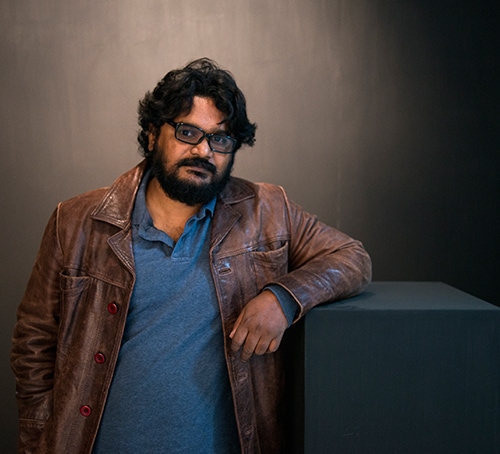
Shumon Ahmed | Bangladesh
b. 1977, Bangladesh
Shumon Ahmed (b. in 1977) is a Dhaka-based artist who explores the fusion between video, photography and text, creating stories that while seemingly contradictory, are private yet collective. His work with the camera and film has also been likened to abstract painting due to his experimental processing techniques with unpredictable results that yield the melancholic, often-blurred images with multiple exposures. Ahmed studied photography at the South Asian Media Academy, Dhaka (2009) and the Danish School of Media and Journalism, Denmark. (2008)
His work has been previously exhibited in various galleries, festivals and screenings worldwide, notably at the 2014 Kochi-Muziris Biennale, India, Dhaka Art Summit (2012, 2014), Whitechapel Gallery in London, Fotomuseum, Winterthur, Switzerland (2010) and a recent solo exhibition at Project88. The artist currently lives and works in Dhaka, Bangladesh.
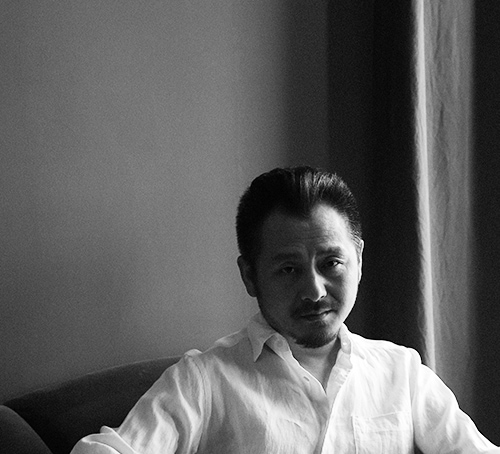
Zhang Wei | China
b. 1977, China
Zhang Wei was once a painter, but in recent years has chosen to make photography. He is a creator of fictional images through photographs. No matter how documentary photographs or videos might seem, they are not objective, because of the limitations of the camera’s machinery and its human users. Zhang Wei’s works have been exhibited at Centre de la Photographie, Geneva, Power Station of Art, Shanghai, Shanghai Centre of Photography and Moscow Museum of Modern Art.
Artificial Theatre was inspired by Artificial Girl 3, a Japanese computer game, that enabled its users to create ‘virtual people’. Through the artificial exchange of his favourite features within this game, he deconstructs and constructs his subjects’, diluting their identities. Zhang combines hundreds of ordinary actors’ body parts into the resulting photographic collages, so that the actors become a synthesis of a celebrity’s image. The results are constructed virtual portraits of leaders Aung San Suu Kyi and Vladimir Vladimirovich Putin seen in this exhibition.
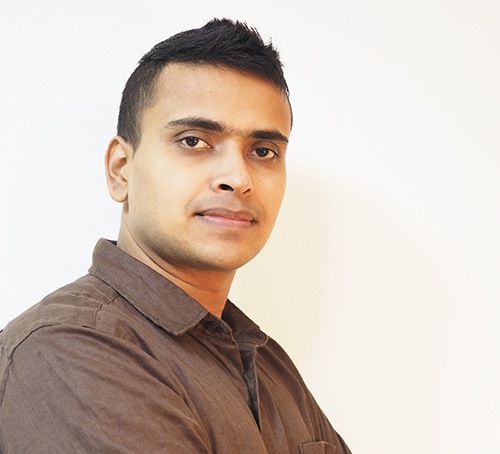
CATEGORY 5: SCULPTURE
Promotesh Das | Bangladesh
b. 1980, Bangladesh
Promotesh Das Pulak was born in Bangladesh. He completed his MFA 2004 from the Faculty of Fine Art, University of Dhaka. Pulak was trained as a painter and the use of diverse material has played a pivotal role in his sculptural practice. He is interested the duality that lies between the organic natural elements and the combat equipment,, which suggests the betrayal of innocence and beauty. Most of his sculpture is war equipment assembled by small flowers made of the shola plant, which is usually used as a traditional craft material.
He exhibited his works in several shows in Bangladesh as well as internationally. Das exhibited in the Bangladesh pavilion at the 54th Venice biennale in 2011. He has also received fellowship form Aminul Islam Trust In 2007.
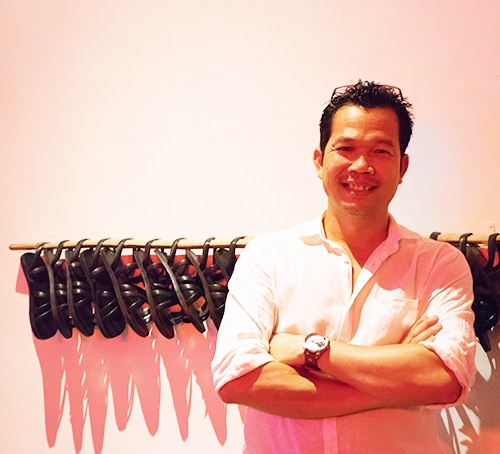
Sareth Svay | Cambodia
b. 1972, Cambodia
Sareth Svay was born in Battambang and today lives and works in Siem Reap. Spending his formative years in refugee camps, he developed an interest in art when he met a volunteer who taught art. His practice in sculpture, installation and durational performance employ materials and processes intentionally associated with war – metals, uniforms, camouflage and actions requiring great endurance. Through the appropriation of objects and monuments, Svay hints at contentious political histories and confronts the idea that danger is present in present times. His works have been exhibited extensively, including at the 4th Singapore Biennale, National Gallery of Victoria, Melbourne and Palais de Tokyo, Paris.
Stake or Skewer, black rubber sandals are highly symbolic of corrupted communism, its leaders and painful personal associations thereof. Svay uses the carrying pole of everyday noodle vendors with seventeen sandals – the number of words for “eat” in Khmer language, focusing on the legacy of such hierarchical systems permeating through all aspects of life, offering rights only to the powerful.
Warning House is an ongoing project for which the artist collects discarded material from the city and site of its exhibition as a means to build a likeness of the small house his large family inhabited from 1979 – 1992.
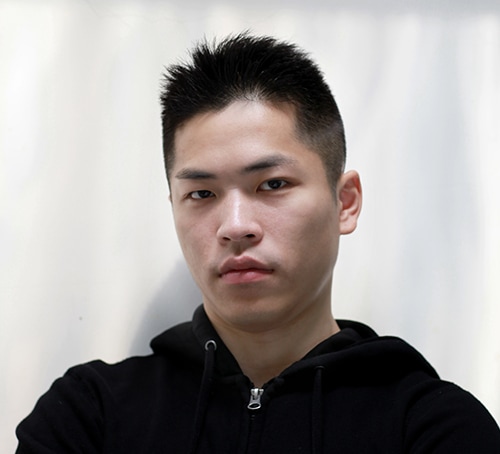
Yang Mushi | China
b. 1989, China
In 2014, Yang Mushi graduated from the sculpture department at the Central Academy of Fine Arts in Beijing. He currently lives and works in Shanghai and Beijing. His most recent works use industrial raw materials such as wood, foam, metal, stone and mud. These works are sharpened and shaped into sculptural forms that emphasize the material properties of the work giving ordinary material an extreme element.
Within these dignified forms hides violence, danger, and fragility. Here, Eastern meditative rites are transformed into artistic experiments that reflect the artist’s perceptions and understanding of action, body, time, and life.